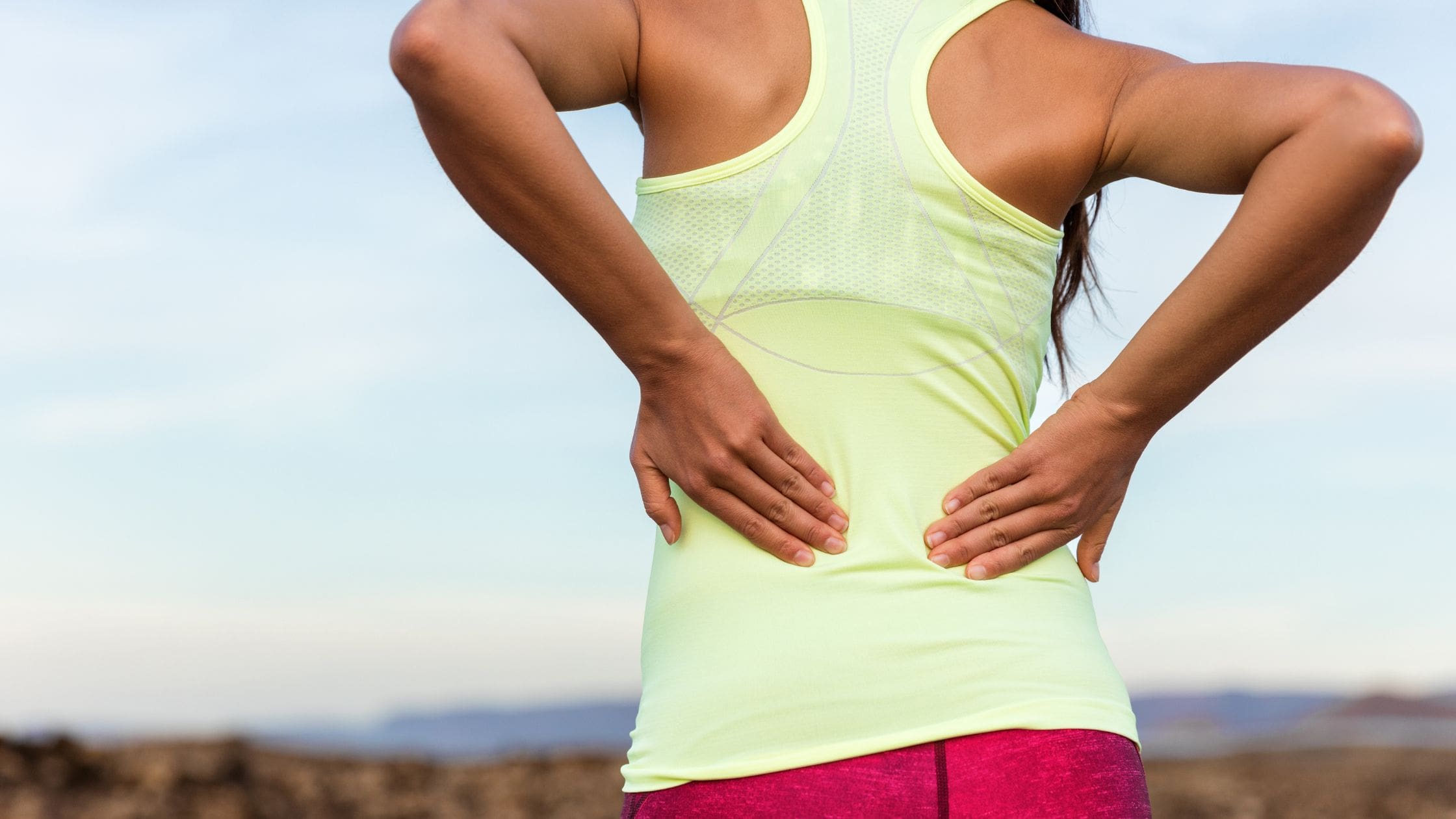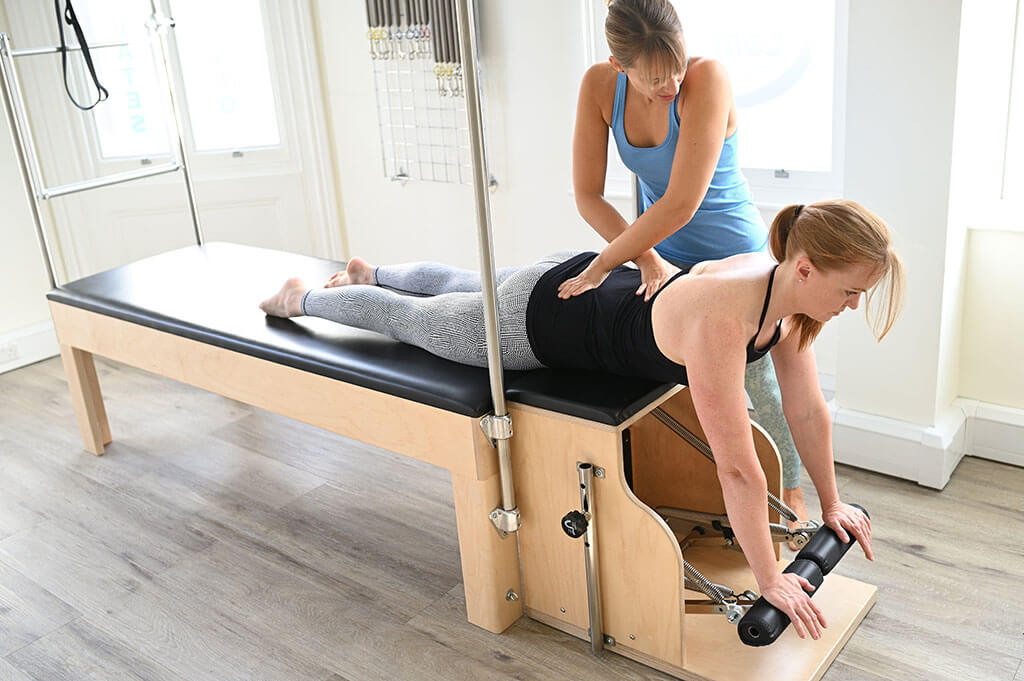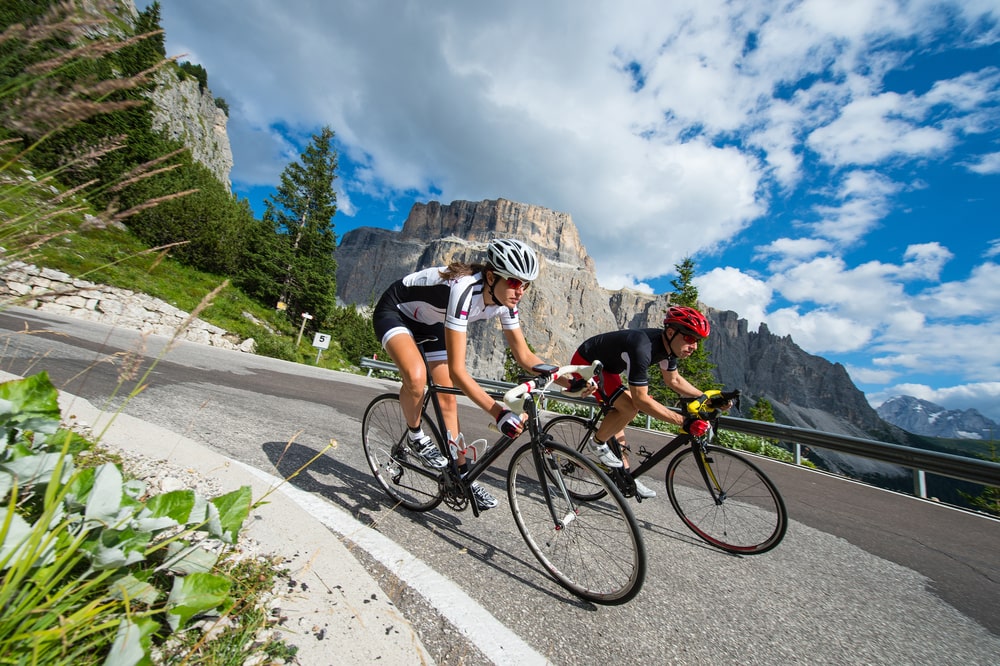Do you suffer from knee pain?
Your knee joints are one of the most important joints in your body. They act to transmit force and movement from your hips to your feet and vice versa. They also help you to carry out simple day to day activities, such as walking, going up and down the stairs and physical exercise.
Knee pain is one of the most common musculoskeletal complaints and can have a big impact on your quality of life if it’s left untreated.
A number of muscle groups help to keep the knees working well, but when one muscle gets injured, or it loses strength, it can throw the whole system around your knees out of balance meaning you’re more likely to suffer pain or injury.
This is why Pilates exercises for knee pain are ideal. They are low impact meaning they are easy on your joints and you are less likely to aggravate an injury or cause more pain.
Clinical Pilates in particular, can help to improve and correct alignment, strengthen the core, and improve flexibility, mobility and body awareness in order to relieve pressure on the knee joints.
In this article, we’ll be discussing:
- What are the causes of knee pain?
- Is Pilates good for knee pain?
- What are the best Pilates exercises for knee pain?
- Why you should do Pilates for knee pain
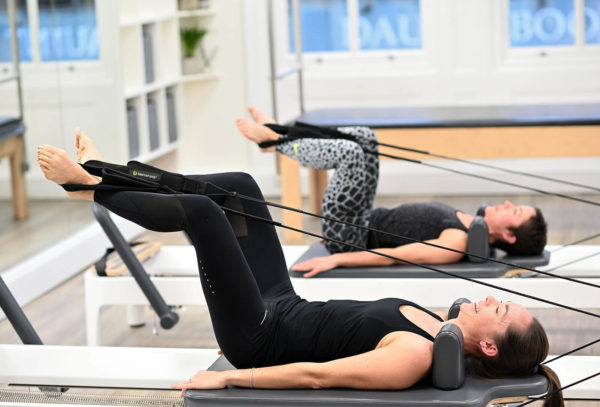
What are the causes of knee pain?
Knee pain can happen for lots of reasons and can often be a symptom of tendon problems, muscle problems or the result of a traumatic injury. However, it may also be a sign of an underlying condition such as osteoarthritis if there is no clear injury.
If you are unsure why you have pain in your knee, we would always advise you to speak to your GP or book an assessment with a physiotherapist who can determine what is causing the discomfort. This is to make sure you have a good diagnosis, as in many cases you can treat knee pain with physiotherapy or clinical Pilates exercises.
Is Pilates good for knee pain?
The simple answer is yes, Pilates is good for knee pain! There are many benefits to Pilates for knee pain, the main being the fact it is low impact meaning it’s much more gentle on your joints so should not aggravate your pain.
Benefits of Pilates for knee pain:
- Works on posture and alignment
- Strengthens muscles and increases joint movement
- Helps with muscle control and strength of lower limb muscles to stabilise the knee joint
- The smooth movements helps to improve range of movement in stiff joints and can help with pain relief
- Improves core control to aid whole body position
- Promotes balance and joint awareness
- Offloads the area by activating other muscles
No matter the knee injury sustained, it is common to lose glute and quad strength as your body attempts to protect the area around the knee. Therefore, Pilates for knee pain is great for rehabilitation as most exercises have a focus on glute and quad activation and strength.
What are the best Pilates exercises for knee pain
Below are four simple Pilates exercises to help you manage your knee pain and will also help to strengthen muscles around the knee and provide support and stability to the joint.
These exercises can be done at any time be it at home or in the gym but do remember to speak to your physio, GP or clinical Pilates instructor first should you be concerned about any of these movements.
1. Bridge

The bridge is one of the most common Pilates exercises given out and is great for helping knee pain as it strengthens the back of your body. It has very few contraindications and you can modify it to help most knee conditions!
How to do the Pilates bridge exercise
- Lie on your back with your legs a comfortable distance away from you.
- Let your hands rest by your side, gently pressing palms down into the floor.
- On an exhale, press down into your heels and allow your hips to lift off the floor.
- Try to let your shoulder and upper back stay rested on the floor, as if they are hanging off your legs
- Reach your knees forwards over your feet to open the hips and pause at the top for an inhale.
- As you exhale, gently pull your heels to your bottom and let your spine come to rest on the floor.
Make sure to let your sit bones release fully at the end before repeating the movement.
Bridge exercise tips
- Take your time with this movement and make sure you fully release at the bottom. This will ensure your pelvic floor also releases and will not overload your back.
- You should not feel this in your back! If you do, try doing the exercise with your feet on a small box or reduce the amount you are coming up.
- Keep pressing into your heels to activate the back of your legs and glutes.
- If you get pain in the front of your knees, take your feet a little further away from you.
2. Quads stretch
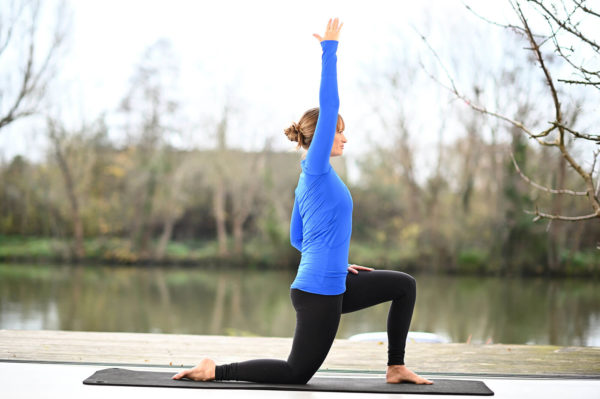
Often, we get pain over the front of our knees or feel a lot of pressure there. Stretching your quads can help relieve this feeling at the same time as opening your hips and offloading the area!
How to do a good quads stretch
- Start by getting down on one knee, with something soft underneath the back leg – imagine you are proposing!
- The back leg will be the one you are stretching.
- Keep this in line with your hip joint and do a pelvic tilt
- As you tuck your tailbone under you will feel a stretch in the front of your thigh.
- Release the tuck and you will let the stretch go.
- To increase this, you can lift the same side arm up towards the ceiling and gently side bend to the opposite side.
- Repeat this a few times before switching sides.
Quads stretch exercise tips
- Have something soft under your knee so that the pressure of the floor doesn’t hurt it
- You can hold onto something or take your front leg slightly wider. It is not a balance exercise but is about the back leg.
- Keep that back leg underneath your pelvis and in line with the middle of your groin. This will ensure a pull of the major muscle in your thigh.
- Use your pelvic tilt as this means you should not be leaning really far forwards to try to find the stretch!
Related Reading: Pilates leg exercises
3. Thigh Stretch
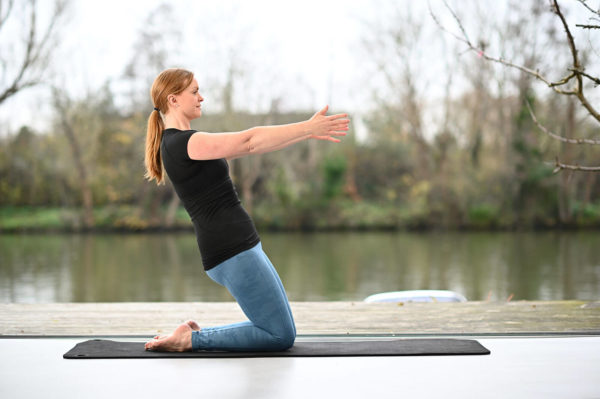
This is an amazing exercise which not only strengthens your core, but also lengthens and strengthens the muscles in the front of your thighs. You will also get the added benefit of feeling all the muscles in the back of your body working as well as your feet!
How to do a thigh stretch
- High kneel on a soft surface.
- Reach your hands out in front of you so that they are parallel to the floor, palms facing each other.
- Press your feet and shins into the ground and your pubic bone forwards. This will help you activate around your pelvis.
- On an exhale, slowly start to hinge backwards – you will not need to go far here!
- Inhale at the bottom of the movement before exhaling, pressing into the feet and returning to upright.
Thigh stretch exercise tips
- Remember to keep your ribs and pelvis in line – the tendency is to extend your back as you go back and lift your rib cage up.
- Use your hands to help bring you up by reaching them forwards.
- Before you start, feel what happens when you press your feet into the floor. You should feel your pelvis move forwards and the back of your legs work.
- Keep the movement smaller and the reps low. It is form over reps!
4. Assisted squat

The squat is a movement that everyone should be able to do as it is a sit to stand! Allowing for some assistance helps you to build confidence, strength and movement in the knees and hips. This will allow you to progress and take it to a full squat, or even single leg movements like a McConnell squat or scooter!
How to do an assisted squat
- Hold onto either the upright of your stairs, a person, or a closed door handle (remember to stand the direction the door closes)!
- Stand with your legs shoulder width apart and feet slightly turned outwards.
- Inhale as you sit your weight backwards towards the floor.
- Pause when the back of your thighs are roughly parallel to the floor.
- Exhale and press into your heels and gently pull down and towards your with your arms to come up to standing.
Repeat this movement to gain confidence.
Assisted squat exercise tips
- Try to keep the weight in your legs equal as you go through this movement. To help with this you can ask yourself whether it feels equal in your feet
- Let your sit bones spread as you come down to release the hips and pelvis floor
- Press into your heels before you come to standing so you can feel your glutes switch on
- Stand closer to the upright so that your upper arms are rested by your side and your elbows are bent to 90 degrees. This will stop you overstretching at the top.
Pilates exercises that should be avoided for knee pain
Whether you have knee problems or not, everyone should be mindful during any workout that the knees should aim to stay roughly in line with the second and third toes.
If you do have knee pain, higher level exercises in the Pilates studio such as Russian splits, magician or single leg parakeet should be avoided until you know the actual cause and have a diagnosis!
Once you have a diagnosis and reason for your pain, you can work in Pilates to correct your movements and offload the joint.
Why you should do Pilates for knee pain
Incorporating Pilates into your rehabilitation will always benefit you if you are suffering from knee pain or have an ongoing knee injury. At Complete Pilates, we offer 1:1 programmes to help you reach specific goals. So whether you are looking to prevent injuries, or are recovering from a specific knee injury, we can provide you with a Pilates plan to help.
If you are new to clinical Pilates or worried about starting a new exercise, at Complete Pilates we have the benefit of having fully qualified physiotherapists available for the assessment. We can answer your questions and make sure that you are seeing the right person for you!
Get in touch or contact us on 02037645668 for further information and advice!
Education is key:
These blogs are designed to give information to everyone, however, it is important to remember that everyone is different! If you have not seen one of our therapists and have any questions about injuries, what you have read or whether this may be useful to you, please just ask. We are more than happy to help anyone and point you in the right direction. Our biggest belief is that education is key. The more you understand about your injury, illness and movement, the more you are likely to improve.



